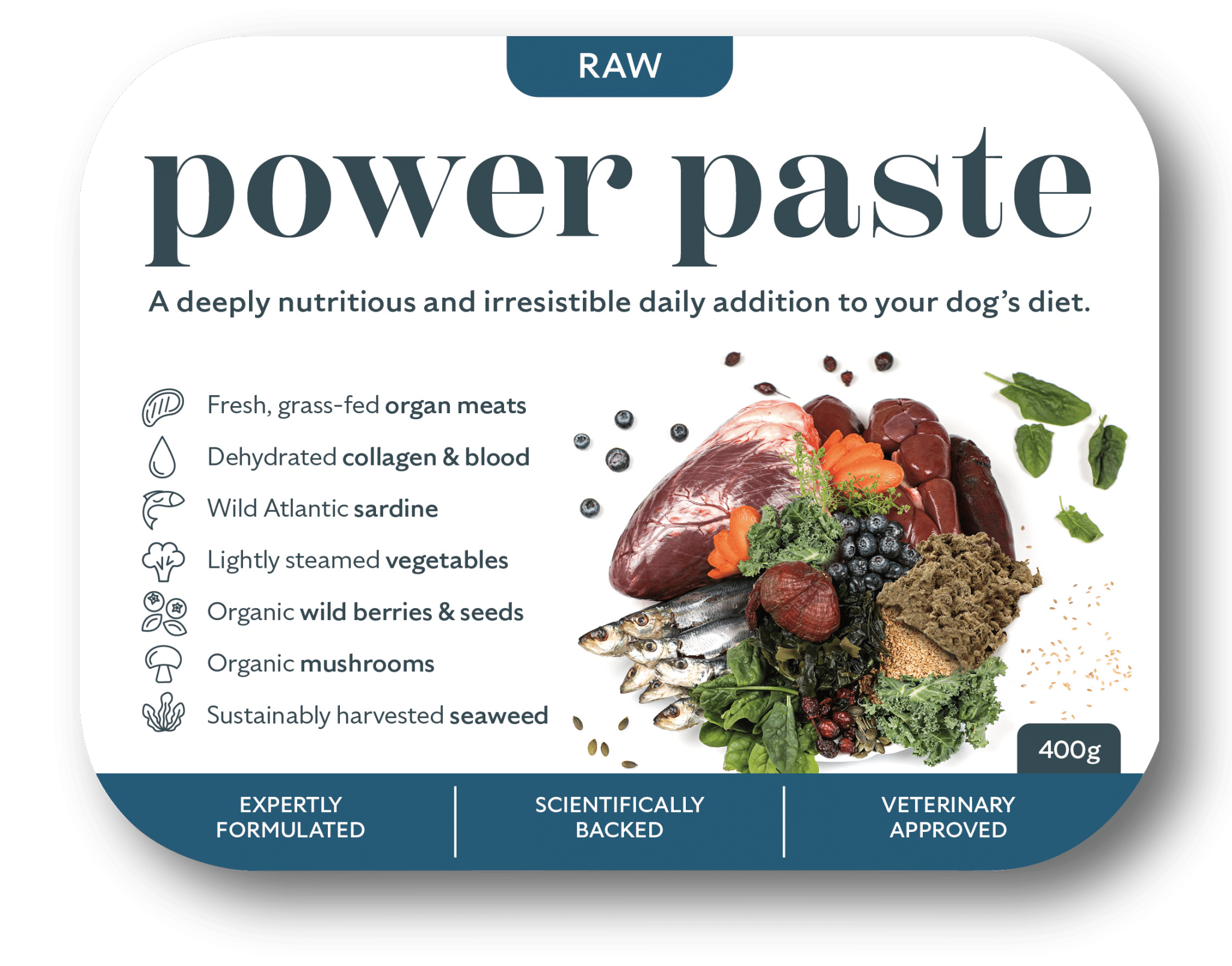Here at Dogs First we are HUGE advocates for natural control of ticks (and fleas for that matter) wherever possible. We have seen many dogs suffer awful side effects from many chemical products, and we’re always a little concerned about excessive toxin burden in the canine body. For those reasons, we want to share some of the tried and tested ways to treat and prevent ticks on dogs naturally.
But before we do, we just wanted to make a quick note; if you are plagued with a horrific infestation and you just can’t shift it no matter what natural approach you use, we would always encourage you to speak to your vet to find the SAFEST way to reduce the parasite load. Parasites are no-ones friends, and your dog needs them gone.
So, let’s check out the natural approaches first, what to use, what to avoid and when you should contact your vet.
Prevention
The best way to get rid of fleas and ticks is to repel them in the first place. Fleas and ticks are always looking for a host to feed from. We just need to make us and our dogs the most unappealing host to walk the planet.
So let’s see how we can achieve that.
Best natural tick preventatives for dogs
Cedarcide
Made from cedar oil, cedarcide is brilliant at repelling fleas, ticks, mosquitoes, ants and more! If you’re not confident about spraying your dog with it, you can spray a bandana and then pop it around your dog’s neck.
Rose geranium oil
A 2013 study demonstrated that geranium oil could repel ticks with 90% effectiveness.
You could add it into a repellent spray:
- 1 cup water
- 1/2 cup apple cider vinegar
- 10 drops rose geranium essential oil
Be mindful whenever you introduce a new essential oil to your dog. If they demonstrate any new symptoms or change in behaviour, cease use until you’ve spoken to your vet.

Dermadog Insect Repellent
One of our favourite products to repel fleas and ticks is the dermadog insect repellent, it includes both rose geranium and cedarwood but a lovely addition of lemongrass.
How to Use Repellent Spray
Spray on the back, legs and stomach and work into the coat. Avoid eyes and mucous membranes. To apply to a dog’s head, spray onto kitchen paper and wipe onto the neck, ears and head, avoiding eyes and nose. Reapply every 2-3 days, or when the dog gets wet.
Do amber collars / charged beads work to prevent ticks on dogs?
Sparse data for amber collars/charged beads means we don’t have a robust scientific basis for this tick/flea prevention. When researchers have been asked for their opinion, responses like this are common:
“a hefty portion of the pets in glowing testimonials [for these products] may never have ended up with a flea or tick problem in the first place.”
So although the data is poor, responses like this can bring us comfort; dogs can also just not have flea/tick problems.
Amber collars/charged beads are liked for their safety margins – they aren’t going to cause many problems, if any. And if they work, you’re winning.

Canident tartar remover for dogs
Treatment – Natural Ways to Get Rid of Fleas and Ticks
If you have unfortunately a tick on your dog, the first thing you need to do is remove them.
The most effective way to remove ticks is with a tick remover tool.
How to use tick remover tool , vid here
A tick remover tool is like a fancy pair of tweezers, but honestly, probably one of the best inventions for pet health.
You need to slot the tick remover tool around the pesky tick, and slowly twist. The aim is not to mutilate or decapitate the tick – we want them all legs wiggling so we know we’ve got the whole thing!
Keep the tick
Remember to pop the tick in a sealed jar with some alcohol, just in case you need to get it tested for any diseases if your dog starts showing any new symptoms like lethargy, loss of appetite, lameness that comes and goes, swollen joints and fever.
Learn more about how to help your dog with recurring, skin ear and gut conditions
What to do if your pet is bitten by a tick
If your pet is bitten by a tick you need to remove it with a tick removal tool straight away.
You can also treat the bite area to soothe and reduce the risk of skin infection.
Can I put neosporin on my dogs tick bite?
Whilst neosporin has been used for decades, it’s probably not the product you still want in your cupboard. There are increasing concerns about how it can disrupt the skin microbiome and we can’t ignore the fact that topical antibiotics are associated with increased risk of atopic dermatitis and implicated in antibiotic resistance.
Yes we want to clean and soothe the bite area, but there are kinder ways to do it. Start with a saline solution; distilled or cooled boiled water and salt. Then dab onto the bite area.
Natural treatments for a dog tick bite
Calendula:
You can use a calendula tea or diluted tincture to clean wounds. There’s evidence to suggest calendula can modulate the inflammatory response and support granulation for improved healing.
Manuka Honey
Manuka honey has been seen to modulate inflammation, support healing, behave as an antibiotic and calm skin irritations.

Do NOT use hydrogen peroxide
More recently there has been increased recommendation to avoid hydrogen peroxide on open wounds and when supporting healing. It is thought that it can be detrimental to the healing process. In addition, it can disrupt the community of bacteria found on the skin.
In short, it’s probably best to leave the hydrogen peroxide alone.
FAQ’s
When should natural tick prevention be used on dogs?
You would be looking to prevent ticks during peak tick/flea season so this is those warmer months. Depending on where you are in the world, this will vary. If you are using a spray repellent, they are generally safe to be used daily. If shop-bought, check the manufacturer’s guidelines. You may also need to reapply if your dog has been swimming/gotten wet.
When should natural tick treatment be used on dogs?
Whenever your dog picks up ticks! Get into the habit of checking your dog for ticks after each walk. Run a flea comb through their hair and remove any engorged ticks with a tick removal tool.
Do natural treatments work to prevent Tick-Borne Diseases?
Natural preventatives will help to repel ticks from attaching to your dog – if they don’t latch on to your dog, they can’t transmit a tick-borne disease. However if they have already latched on and started feeding, there is a risk of disease-transmission. Check out our other blog about disease transmission risk from ticks here.
How to prevent lyme disease in dogs after tick bite
If you find a tick on your dog, you need to remove it as soon as possible. Remember to store the tick in a sealed jar with some alcohol so it could be tested for disease. If your dog starts showing new symptoms following a tick bite, pop to see your vet. We’re watching for lethargy, loss of appetite, lameness that comes and goes and swollen joints. If your dog has been infected, your vet will start a course of antibiotics.
Do I Need to Use Flea and Tick Prevention in the Winter?
Fleas and ticks are less active in the winter, but if you are concerned, there is no reason why you can’t use your natural preventatives during the winter.
Grab your copy of the top rated canine nutrition manual today!
Conclusion
As you can see, we advocate natural control of ticks and fleas wherever possible. We see how chemical products work and we’d rather limit toxic risk to our dogs if we can. There are many ways to repe ticks and naturally treat them. However, if you are plagued with a horrific infestation, it’s important to speak to your vet to find the SAFEST way to reduce the parasite load.














